Filter by
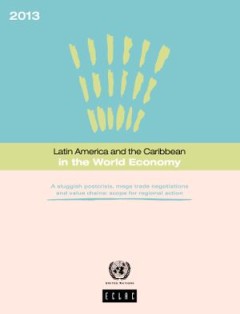
Latin America and the Caribbean in the World Economy 2013 : A sluggish postcr…
The 2013 edition of Latin America and the Caribbean in the World Economy is subtitled “A sluggish postcrisis, mega trade negotiations and value chains: scope for regional action” and is made up of three chapters. Chapter 1 reviews the main features of the persistently weak global economy and lacklustre world trade and then turns to global and regional trade trends and prospects. Chapter II …
- Edition
- -
- ISBN/ISSN
- 9789212211169
- Collation
- -
- Series Title
- -
- Call Number
- 650
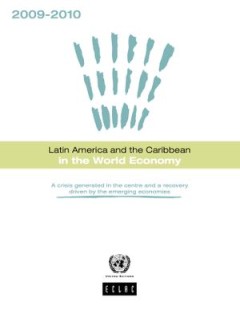
Latin America and the Caribbean in the World Economy 2009-2010 : A crisis gen…
The 2009-2010 edition of Latin America and the Caribbean in the World Economy, which discusses the crisis generated in the developed world and the recovery driven by the emerging economies, is divided into five chapters. Chapter I undertakes a short- and medium-term analysis of the post-crisis international economic situation, concentrating on its implications for international trade prospects …
- Edition
- -
- ISBN/ISSN
- 9789211217421
- Collation
- -
- Series Title
- -
- Call Number
- 650
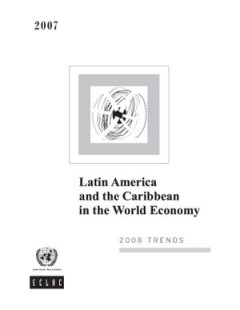
Latin America and the Caribbean in the World Economy 2007 : 2008 trends
This year's edition of Latin America and the Caribbean in the World Economy is divided into seven chapters. Chapter I contains an analysis of recent trends in the main industrialized and emerging economies and reviews the possible impact of the financial crisis that began in the United States on the world economy and on the economic and trade performance of Latin America and the Caribbean. The …
- Edition
- -
- ISBN/ISSN
- 9789211216769
- Collation
- -
- Series Title
- -
- Call Number
- 650

Climate Adaptation Finance and Investment in California
This book serves as a guide for local governments and private enterprises as they navigate the unchartered waters of investing in climate change adaptation and resilience. This book serves not only as a resource guide for identifying potential funding sources but also as a roadmap for asset management and public fi nance processes. It highlights practical synergies between funding mechanisms, a…
- Edition
- -
- ISBN/ISSN
- 9780367026073
- Collation
- -
- Series Title
- -
- Call Number
- 650 KEE c
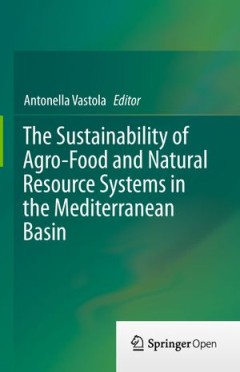
The Sustainability of Agro-Food and Natural Resource Systems in the Mediterra…
Agriculture; Food Science; Environmental Science and Engineering
- Edition
- -
- ISBN/ISSN
- 9789400779594
- Collation
- -
- Series Title
- -
- Call Number
- 330 VAS s
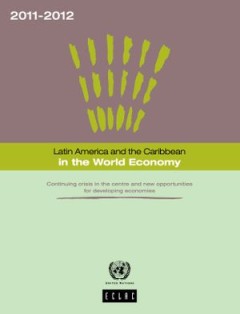
Latin America and the Caribbean in the World Economy 2011-2012 : Continuing c…
The 2011-2012 edition of Latin America and the Caribbean in the World Economy, which focuses on the theme of continuing crisis in the centre and new opportunities for developing economies, is divided into four chapters.
- Edition
- -
- ISBN/ISSN
- 9789212210636
- Collation
- -
- Series Title
- -
- Call Number
- 650

Foreign Direct Investment in Latin America and the Caribbean 2017
This publication sets out and analyses the main foreign direct investment (FDI) trends in the countries of Latin America and the Caribbean. The 2017 edition shows that the region is at a difficult juncture. FDI inflows declined by 7.9% in 2016, to US$ 167.043 billion, representing a cumulative fall of 17.0% since the peak in 2011. The fall in commodity prices continues to affect investments in …
- Edition
- -
- ISBN/ISSN
- 9789211219623
- Collation
- -
- Series Title
- -
- Call Number
- 650
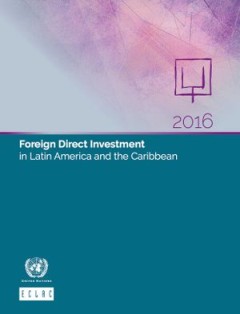
Foreign Direct Investment in Latin America and the Caribbean 2016
The 2016 version of Foreign Direct Investment in Latin America and the Caribbean is the most recent edition of an annual series published by the Unit on Investment and Corporate Strategies of the Division of Production, Productivity and Management of the Economic Commission for Latin America and the Caribbean (ECLAC).
- Edition
- -
- ISBN/ISSN
- 9789211219142
- Collation
- -
- Series Title
- -
- Call Number
- 650

Foreign Direct Investment in Latin America and the Caribbean 2015
In its latest edition, the Foreign Direct Investment in Latin America and the Caribbean report analyzes in-depth the FDI received by the Caribbean, where these flows are much more significant than in the rest of the region as a proportion of Gross Domestic Product (GDP). The study also examines the impact of FDI on the environment, which has not been measured or regulated sufficiently by countr…
- Edition
- -
- ISBN/ISSN
- -
- Collation
- -
- Series Title
- -
- Call Number
- 650

Foreign Direct Investment in Latin America and the Caribbean 2012
For the third year in a row, the countries of Latin America and the Caribbean continued to attract growing flows of foreign direct investment (FDI). The figures for 2012 were particularly significant because they were set in an international context of falling global FDI flows. The new increase in FDI posted brought the region's share of global FDI flows up to 12% in 2012. Economic growth in th…
- Edition
- -
- ISBN/ISSN
- 9789211218343
- Collation
- -
- Series Title
- -
- Call Number
- 650
 Computer Science, Information & General Works
Computer Science, Information & General Works  Philosophy & Psychology
Philosophy & Psychology  Religion
Religion  Social Sciences
Social Sciences  Language
Language  Pure Science
Pure Science  Applied Sciences
Applied Sciences  Art & Recreation
Art & Recreation  Literature
Literature  History & Geography
History & Geography